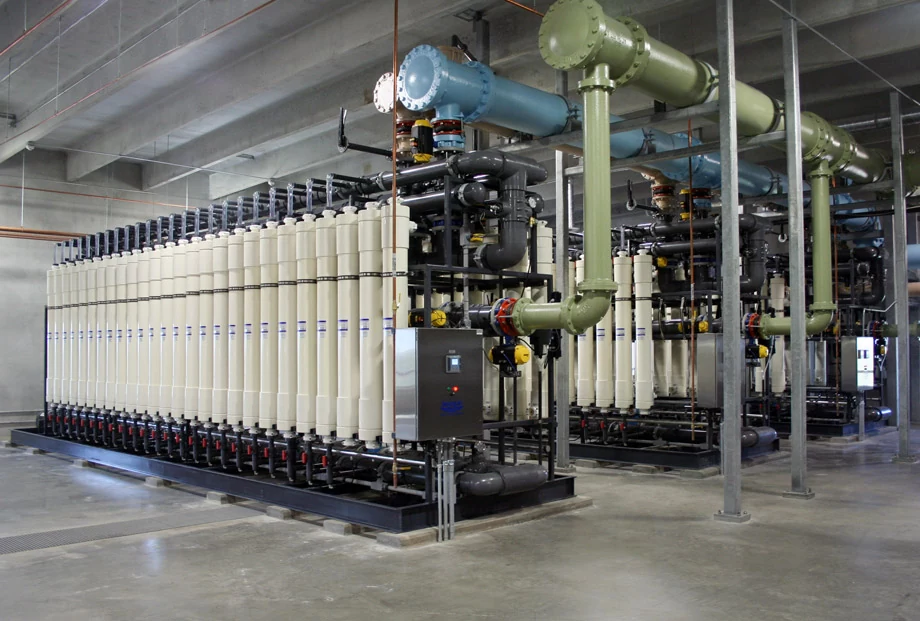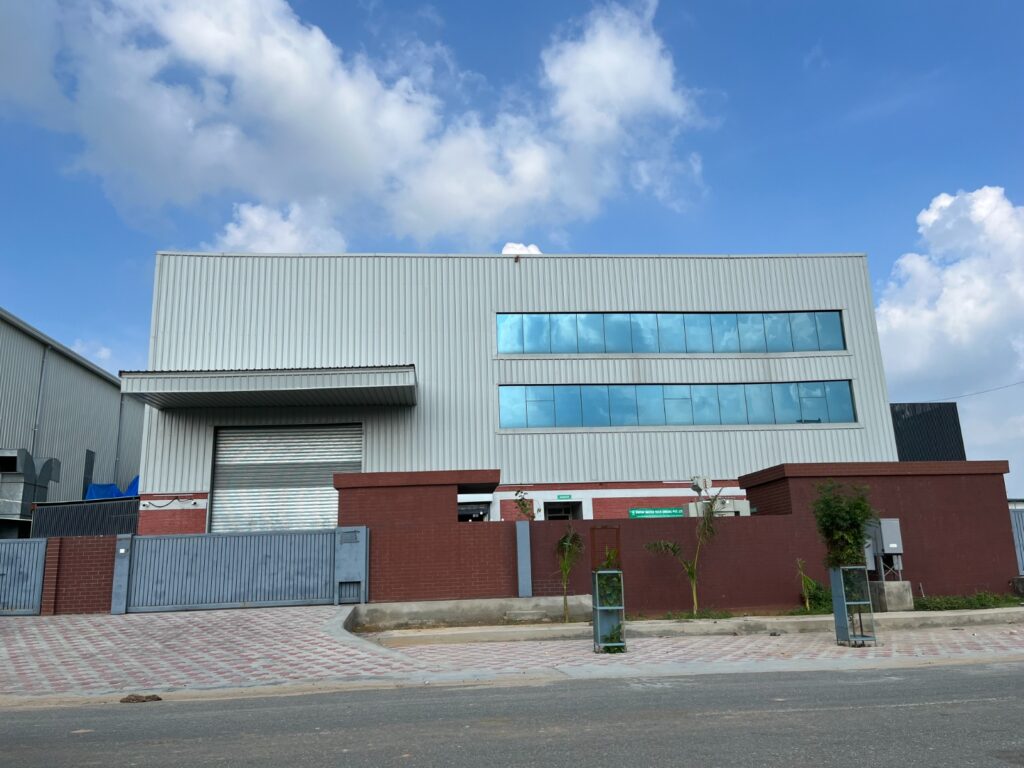Solutions
Filtration System
Reverse osmosis (RO) is a widely used water treatment process that employs a semi-permeable membrane to remove a wide range of contaminants from water.
It involves passing water through a filtration medium, which traps and separates particles, resulting in cleaner and clearer water. Filtration systems play a critical role in water treatment by providing an effective barrier against contaminants and improving the quality of treated water for various applications, such as drinking water supply, industrial processes, and wastewater treatment.
Filtration systems are typically employed as part of a multi-stage water treatment process. They can be used for primary clarification to remove larger particles, secondary treatment to further reduce suspended solids and microorganisms, or as a final step to polish the water before disinfection and distribution.

Activated carbon filter
In the water treatment process, an activated carbon filter is a component used to remove impurities and contaminants from water. It consists of a bed of activated carbon, which is a specially processed form of carbon with a high surface area.
When water passes through the activated carbon filter, several mechanisms occur:
- Adsorption: Activated carbon has a porous structure with a large surface area, allowing it to adsorb contaminants present in the water. The carbon’s surface attracts and traps impurities such as chlorine, volatile organic compounds (VOCs), pesticides, herbicides, certain heavy metals, and some taste and odor compounds.
- Chemical reactions: Some contaminants, like chlorine and certain organic compounds, undergo chemical reactions with the activated carbon. These reactions can result in the removal or transformation of the pollutants into less harmful forms.
- Microbial activity: Activated carbon can also provide a habitat for beneficial microorganisms that aid in the biological degradation of certain organic contaminants. These microorganisms can break down organic pollutants, improving the overall water quality.
Activated carbon filters are commonly used in various stages of the water treatment process, including:
- Pre-treatment: Activated carbon filters may be employed as a pre-treatment step to remove chlorine, organic compounds, and other impurities before further processing.
- Point-of-use/Point-of-entry treatment: Activated carbon filters can be installed at the point of use, such as under the sink or at the point of entry into a building, to provide clean and treated water for drinking, cooking, and general use.
- Municipal water treatment: In large-scale water treatment facilities, activated carbon filters can be incorporated into the treatment process to remove contaminants and improve the overall quality of the water supplied to communities.
Activated carbon filters are effective in reducing specific contaminants, but their efficiency can vary depending on the type and quality of the activated carbon, the contact time between water and the carbon bed, and the specific contaminants present. Regular maintenance and periodic replacement of the activated carbon are necessary to ensure optimal performance of the filter.
Conventional filter
A conventional filter, also known as a multimedia filter or a granular media filter, is a common type of filtration system used in the water treatment process. It is designed to remove suspended particles and turbidity from water by passing it through various layers of filtration media.
The construction of a conventional filter typically includes the following components:
- Filter Media: The filter media consists of different layers of materials with varying particle sizes. Common media used in conventional filters include sand, anthracite coal, garnet, and gravel. These media layers are arranged in a specific sequence, with the coarsest media at the top and the finest media at the bottom.
- Support Gravel: The support gravel layer is placed at the bottom of the filter bed to provide uniformity and support for the filter media layers above.
- Filter Bed: The filter bed consists of the layered filter media arranged in descending order of particle size. As water passes through the filter bed, suspended particles and impurities are trapped and retained by the media.
- Underdrain System: An underdrain system is installed at the bottom of the filter to evenly distribute the flow of water and collect the filtered water for further treatment or distribution.
The filtration process in a conventional filter involves the following steps:
- Coagulation and Flocculation: Prior to filtration, chemicals may be added to the water to promote coagulation and flocculation. These processes help to aggregate smaller particles into larger, easier-to-remove floc particles.
- Filtration: The water flows downward through the filter bed, passing through the various layers of filter media. As it travels through the filter bed, suspended particles and turbidity are physically trapped and removed.
- Backwashing: Over time, the accumulated particles and debris in the filter media can reduce its effectiveness. Periodic backwashing is carried out to clean and regenerate the filter bed. This process involves reversing the flow of water through the filter, dislodging and flushing out the trapped particles.
Conventional filters are commonly used in water treatment plants and can effectively remove suspended solids, sediment, turbidity, and larger particles from the water. However, they may not be as efficient in removing dissolved contaminants or substances at the molecular level. Additional treatment processes, such as disinfection or advanced filtration methods, may be required for comprehensive water purification.
Water clarifiers
Water clarifiers, also known as sedimentation tanks or clarifiers, are an essential component of the water treatment process. They are designed to remove suspended particles and settle out solids from water through the principle of sedimentation.
The purpose of water clarifiers is to separate the solid particles, such as sand, silt, clay, and other suspended materials, from the water, resulting in clearer and cleaner water. The process takes advantage of the difference in density between the solid particles and the water.
Here’s an overview of how water clarifiers work:
- Inlet and Distribution: The water to be clarified enters the clarifier through an inlet pipe, which is designed to distribute the flow evenly across the tank’s width. This helps ensure uniform settling of particles throughout the tank.
- Settling Zone: Inside the clarifier, the water slows down, allowing the suspended particles to settle to the bottom due to gravity. The settled particles form a layer called sludge or sediment.
- Sludge Collection: As the sediment settles, it accumulates at the bottom of the clarifier. The sludge is periodically removed through sludge collection mechanisms, such as sludge rakes or a suction system, to prevent build-up and maintain the clarifier’s efficiency.
- Effluent Collection: The clarified water, with reduced levels of suspended solids, rises to the top of the clarifier and is collected through effluent weirs or launders. It is then directed for further treatment or distribution.
Water clarifiers can be designed as rectangular, circular, or inclined plate clarifiers, depending on the specific application and treatment requirements. They are typically used in various stages of the water treatment process, including:
- Primary Clarification: In this stage, water from the source, such as a river or lake, undergoes primary treatment to remove larger particles and sediments before further treatment.
- Secondary Clarification: After biological treatment processes, such as activated sludge or trickling filters, water undergoes secondary clarification to separate out the microorganisms and any remaining solids.
Water clarifiers play a crucial role in water treatment plants, ensuring effective removal of solids and improving the overall quality of the treated water. The clarified water then proceeds to subsequent treatment steps, such as filtration, disinfection, and additional chemical treatments, to meet the required quality standards before distribution or reuse.

